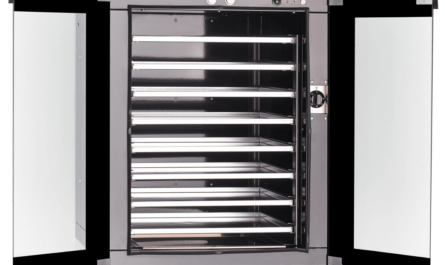Neurovascular devices are medical instruments used to diagnose and treat conditions affecting the brain and spinal cord vasculature. These conditions include aneurysms, arteriovenous malformations, carotid artery disease, and stroke. Some of the major types of neurovascular devices include stents, coils, flow diverters, liquid embolic agents, microcatheters, and guidewires. Over the years, technological innovations have led to improved design and functionality of these Neurovascular Devices, enabling minimally invasive treatment of previously difficult to access vascular lesions.
Advancements in Stent Technology
Stents have become a mainstay treatment option forvarious cerebrovascular diseases like atherosclerosis. Early stent designs were bare-metal stents but were prone to restenosis rates as high as 30%. To address this, drug-eluting stents were developed that slowly release antiproliferative drugs to prevent smooth muscle cell overgrowth and new tissue formation. More recently, self-expanding stents made of nitinol, a nickel-titanium alloy, have gained popularity due to their flexibility and ability to conform to cerebral artery curvature. These stents have restenosis rates under 10% and require no inflation mechanism. Manufacturers have further improved stent designs with enhanced deliverability, visibility, radial force, and conformity to vascular irregularities. Coating stents with anti-platelet drugs is another area of active research to reduce thrombosis risk.
Advancements in Aneurysm Coiling Technology
Endovascular coiling has largely replaced open neurosurgery for treating intracranial aneurysms. Early coils were made of platinum and had a single winding configuration. To promote better aneurysm filling, complex 3D coil configurations were developed using windings, braiding, random shapes, and varied cable thickness. More recently, bioactive coils made of hydrogel polymers have been introduced. These soft coils conform well to aneurysm cavities, promote better clot formation with less compaction over time. Dual-density and braided coil designs offer control over coil packing density within aneurysms. Detachment mechanisms have also evolved from electrolytic to mechanical detachment systems for improved reliability. Advancements in microcatheter design aid delivery of these complex coil configurations into narrow vascular spaces.
Flow Diverters for Complex Aneurysms
Flow diverters such as the Pipeline Embolization Device have expanded treatment to giant and complex aneurysms previously considered high-risk for coiling. These self-expanding stents have a tight braided mesh design toredirect bloodflow away from the aneurysm while maintaining branch vessel patency. The robust radial force of newer generation flow diverters allows deployment across wide aneurysm necks. Modifications to filing density and polymer coating enhance divergence of bloodflow andcell endoluminal tissue growth across the aneurysm orifice, achieving higher occlusion rates than coiling alone. Advances in visualization during and post implantation using intraluminal visualization and digital subtraction angiography have improved safety and effectiveness of neurovascular devices. Dual anti-platelet therapy is recommended post-procedure to prevent in-stent thrombosis.
Improved Microcatheters and Guidewires
Microcatheter and guidewire technology has significantly advanced over the past decade. Newer microcatheters are longer, more flexible and kink-resistant with tapered, hydrophilic coatings for ease of navigation through tortuous vessels. Distal soft tips and variable levels of radiopacity enable deep intracranial access near sensitive branch points. Rapid exchange designs facilitate microcatheter exchange without withdrawing the incorporated guidewire. Enhanced visibility under fluoroscopy from proprietary radiopaque platinum and polymer core technologies aids co-axial positioning. Guidewires now offer variable stiffness segments, atraumatic tips, steerability, and torque control for precise navigation. Nitinol core wires provide shape memory and kink resistance. These device improvements permit treatment of previously inaccessible smaller vessel anatomies with minimal risk of vessel injury.
Advancing Liquid Embolic Agents
Liquid embolic agents serve as an alternative or adjunct to coils in treating vascular lesions. Agents like Onyx allow permanent filling of abnormal vascular spaces by precipitating into a non-adherent hydrophobic sponge-like cast. Newer agents build on this through physical and chemical modifications. Some agents offer dual precipitationin gel and liquid phases for controlled delivery. Others incorporate drugs or polymers to stimulate clotting or tissue growth. Bio-resorbable agents that degrade over time while complementing the body’s healing response are under exploration. Imaging enhancements permit real-time visualization of agent migration and precipitation patterns to ensureits containment. Developing safer, more effective liquid embolics will continue expanding the size and complexity of treatable vascular anomalies.
Rapid technological progress has transformed the field of neurovascular devices. Improved materials, designs and functional enhancements have enabled minimally invasive treatment of previously difficult to access conditions affecting the brain and spinal cord vasculature. Looking ahead, further enhancements in deliverability, conformability, biocompatibility as well as agents stimulating tissue growth hold promise to advance treatment and clinical outcomes. Continued innovation will expand the scope of treatable lesions while minimizing complication risk, underscoring the bright future of neurovascular therapies.
*Note:
1. Source: Coherent Market Insights, Public sources, Desk research.
2. We have leveraged AI tools to mine information and compile it.


